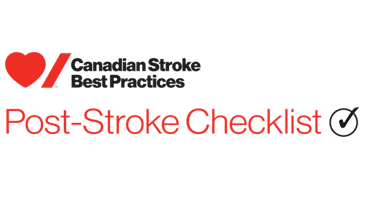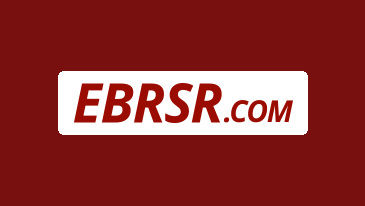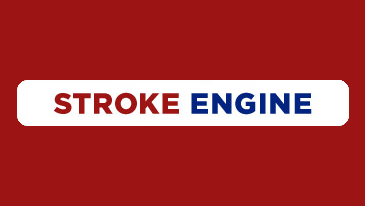- Definition and Considerations
- 1. Initial Stroke Rehabilitation Assessment
- 2. Stroke Rehabilitation Unit Care
- 3. Delivery of Inpatient Stroke Rehabilitation
- 4. Outpatient and In-Home Stroke Rehabilitation (including Early Supported Discharge)
- 5.1 Management of the Upper Extremity Following Stroke
- 5.2. Range of Motion and Spasticity in the Shoulder, Arm and Hand
- 5.3. Management of Shoulder Pain & Complex Regional Pain Syndrome (CRPS) following Stroke
- 6.1. Balance and Mobility
- 6.2. Lower Limb Spasticity following Stroke
- 6.3. Falls Prevention and Management
- 7. Assessment and Management of Dysphagia and Malnutrition following Stroke
- 8. Rehabilitation of Visual and Perceptual Deficits
- 9. Management of Central Pain
- 10. Rehabilitation to Improve Language and Communication
- 11. Virtual Stroke Rehabilitation
Recommendations
- All patients with stroke should be screened for visual, visual motor and visual perceptual deficits as a routine part of the broader rehabilitation assessment process [Evidence Level C].
- Patients with suspected perceptual impairments (visuo-spatial impairment, agnosias, body schema disorders and apraxias) should be assessed using validated tools [Evidence Level C].
- Patients, families and caregivers should receive education on visual-spatial neglect and treatment recommendations [Evidence Level C].
- Visual scanning techniques should be used to improve perceptual impairments caused by neglect [Evidence Level B]
- Virtual reality or computer-based interventions for neglect should be used to improve visual perception and alleviate right-hemisphere bias [Evidence Level B].
- There is insufficient evidence to recommend for or against limb activation to improve neglect [Evidence Level B]
- There is conflicting evidence on the effectiveness of prism glasses and eye-patches for improving neglect [Evidence Level B].
- Patients with suspected limb apraxia should be treated using errorless learning, gesture training and graded strategy training [Evidence Level B].
- Mirror therapy: Mirror therapy appears to improve neglect [Evidence Level B] and may be considered as an intervention for unilateral inattention [Evidence Level B].
- Mirror therapy combined with limb activation: Combining mirror therapy with limb activation appears to be more effective than limb activation alone at improving neglect [Evidence Level B].
Refer to CSBPR Transitions and Community Participation Section 4 for information on return to driving.
Visual perceptual disorders are a common clinical consequence of stroke. They include unilateral neglect, which has a major impact on rehabilitation outcome. Visual perceptual disorders result in processing changes in the integration of visual information with other systems. These changes decrease a patient’s ability to adapt to the basic requirements of daily life. The incidence of unilateral spatial neglect is estimated to be approximately 23%. The presence of neglect has been associated with both severity of stroke and age of the individual.
Limb apraxias are more common in those with left hemisphere involvement (28 – 57%) but can also be seen in right hemisphere damage (0 – 34%) (Donkervoort et al., 2000). While apraxia improves with early recovery, up to 20 percent of those initially identified will continue to demonstrate persistent problems. Severity of apraxia is associated with changes in functional performance.
People with stroke express that they were not all screened for visual perceptual deficits following stroke and emphasize that it is an important aspect of recovery. For example, it was difficult for person’s with stroke to fully participate in rehabilitation when experiencing diplopia.
To achieve timely and appropriate assessment and management of perceptual deficits, the organization should provide:
- Initial standardized assessment of visual perceptual deficits (including inattention and apraxia) performed by clinicians experienced in the field of stroke.
- Timely access to specialized, interdisciplinary stroke rehabilitation services where therapies of appropriate type and intensity are provided.
- Access to appropriate equipment to aid in recovery when necessary without financial barriers.
- Long-term rehabilitation services widely available in nursing and continuing care facilities, and in outpatient and community programs.
- Proportion of stroke patients with documentation that an initial screening for visual perceptual deficits was performed as part of a comprehensive rehabilitation assessment.
- Proportion of stroke patients with poor results on initial screening who then receive a comprehensive assessment by appropriately trained healthcare professionals.
Health Care Provider Information
- Table 1: Stroke Rehabilitation Screening and Assessment Tools
- Comb and Razor Test
- Behavioral Inattention Test
- Line Bisection Test
- Rivermead Perceptual Assessment Battery
- Ontario Society of Occupational Therapy Perceptual Evaluation
- Motor-Free Visual Perceptual Test
- Apraxia Screen of TULIA (AST)
- Stroke Engine
Information for People with Stroke, their Families and Caregivers
- Taking charge of your stroke recovery: Rehabilitation and recovery infographic
- Taking charge of your stroke recovery: Transitions and community participation infographic
- Aphasia Institute
- Post Stroke Checklist
- Stroke Resources Directory
- Your Stroke Journey
- Stroke Engine
- Heart and Stroke Foundation Canadian Partnership for Stroke Recovery
- Senses and Perception
Evidence Table and Reference List
The most common type of visual perception disorder following stroke is visual neglect or inattention. Estimates obtained from a systematic review indicated that visual neglect was reported on average in 32% of patients following stroke. The range was wide with the lowest number coming from a prospective study, where assessments were conducted within 3 weeks following stroke in patients with suspected visual deficits, to 82%, when assessed within 3 days of stroke in an unselected sample of general stroke patients (Hepworth et al. 2015). Unilateral spatial neglect (USN) is being more commonly associated with lesions in the right hemisphere (affecting the left side of the body) compared to a left-sided lesion. The presence of neglect has been associated with longer lengths of hospital stay and slower recovery during inpatient rehabilitation (Gillen et al. 2005).
Therapeutic approaches to treat neglect include remedial approaches (e.g., visual scanning, feedback or cueing, virtual reality and mental practice), and compensatory approaches (e.g.prisms, half-field, eye-patching, limb activation). Azouvi et al. (2017) included the results of 37 RCTs in a narrative review assessing rehabilitation techniques for post-stroke spatial neglect, including both top down and bottom up approaches. The authors concluded that one rehabilitation approach cannot be recommended over another, and a combination of several methods may be most effective than a single method. They further concluded that the evidence levels associated with these interventions remain low due to small sample sizes, methodological bias, and contradictory results. Bowen et al. (2013) included the results of 23 RCTs evaluating a variety of cognitive rehabilitation programs compared with an active or inactive control in persons with neglect following stroke. While cognitive rehabilitation approaches were associated with significant improvements in measures of neglect, when measured immediately after the intervention (SMD=0.35, 95% CI 0.09 to 0.62, p=0.0092), they were no longer when measured at follow-up (SMD=0.28, 95% CI -0.03 to 0.59, p=0.079). These techniques were not associated with significant improvements in ADL performance, when measured immediately after the intervention (SMD=0.23, 95% CI -0.02 to 0.48, p=0.068), or at follow-up (SMD=0.31, 95% CI -0.10 to 0.72, p=0.14). In another systematic review, Lisa et al. (2013) reported that among almost all of the 15 included RCTs, there were improvements reported in both the experimental and control groups, but in only 7 trials were there statistically significant between group differences, in favor of the experimental group. Large effect sizes (d > 0.80). were found in only four studies of virtual reality vs. visual scanning training (VST) (d=0.90), somatosensory electrical stimulation + VST vs. sham +VST (d=1.63), TENS vs. control (d=0.87) and optokinetic stimulation vs. control (d=1.59), and individual and group mirror therapy vs. sham (d=2.84 and d= 1.25).
Other forms of treatment for spatial neglect and visual field deficits include the use of noninvasive brain stimulation. Kem et al. (2013) randomized 27 patients admitted for inpatient rehabilitation, with visuospatial neglect to receive repetitive transcranial magnetic stimulation (rTMS). Patients were randomized to receive 10, 20-minute sessions over 2 weeks of 1) low-frequency (1Hz) rTMS over the non-lesioned posterior parietal cortex (PPC), 2) high-frequency (10Hz) rTMS over the lesioned PPC, or 3) sham stimulation. Although there were no significant differences between groups in mean changes in Motor-Free Visual Perception Test, Star Cancellation Test or Catherine Bergego Scale, there was a significant difference among groups in Line Bisection Test change scores (p=0.049). Post-hoc analysis indicated the improvement was significantly greater in the high-frequency rTMS group compared to sham-stimulation group (-36.9 vs. 8.3, p=0.03). Additionally, improvements in mean Korean-Modified Barthel Index scores in both the high and low frequency groups were significantly greater compared to those in the sham stimulation group (p<0.01 and p=0.02, respectively). Yang et al. (2017) reported improvements in mean Behavioural Inattention Test (BIT)-Conventional, following treatment with rTMS, when treatment was combined with a sensory cueing device worn on the left wrist.





